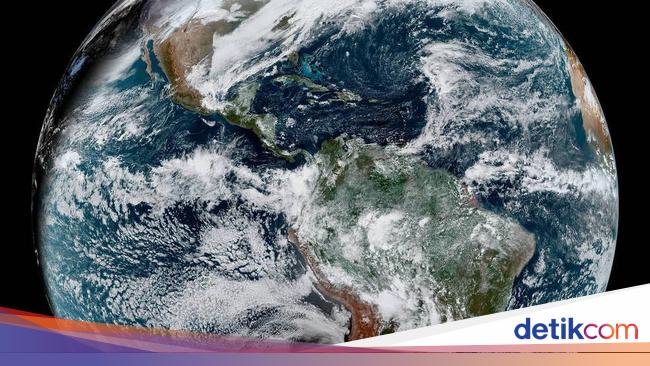Jakarta –
Earth surrounded by a layer of complex gas that forms atmosphere. They protect and maintain all life on this planet. However, human behavior that is not environmentally friendly contributes to shrinking the entire layer.
A recent study found that the thickness of the stratosphere has shrunk by 400 meters since 1980. Although decreases in stratosphere thickness have been previously reported, this study is the first to examine it on a global scale.
“It’s surprising. This proves we tinkered with the atmosphere up to 60 kilometers,” said one of the research team, physicist from the University of Vigo Earth Juan Añel as quoted from Science Alert.
Mentioned by him, covering the sky about 20 to 60 kilometers above us, the stratosphere envelops the layer of the atmosphere we breathe (troposphere). Some clouds roam this high and the occasional bird. The stratosphere holds the very important ozone layer which has been destroyed through CFC emissions.
The collective global efforts have so far been quite successful in stemming the ozone depletion that has caused the ozone hole over Antarctica. But Earth’s greenhouse gas emissions have altered the entire stratosphere.
Atmospheric physicist from Charl’s University Petr Pisoft and colleagues used satellite observations since the 1980s combined with climate models to determine that rising CO2 causes the stratosphere to contract.
“We show that stratospheric contraction is not just a response to cooling, because changes in tropopause and stratopause stress also contribute,” the research team wrote in their paper.
They explained that warming due to greenhouse gases in the troposphere causes it to expand and presses on the above stratosphere. In addition, the addition of CO2 to the stratosphere itself causes the combination of gases to cool and gather closer together (the opposite effect on the troposphere) and shrink the entire layer.
“In a plausible climate change scenario, our planet’s stratosphere could lose 4% of its vertical expansion (1.3 km) from 1980 to 2080,” said Anel.
Ozone and molecular oxygen in the stratosphere absorb most of the ultraviolet radiation from the Sun, thus protecting us all from the Sun’s most dangerous rays. Here, air temperature increases with altitude (as opposed to the troposphere below), which makes this gas layer stable.
The aircraft can retreat in this condition when the weather becomes bad in the lower areas. But this stability also means that any chemical that reaches the stratosphere is likely to survive.
If the predicted changes come to fruition, the scale will become large enough to potentially impact satellites, GPS and radio communications, Pisoft and the team warn.
It can also change the altitude distribution of absorbent and transmitter molecules and thus change how the stratosphere absorbs radiation and its overall dynamics. However, much remains to be resolved before we can understand if and how these impacts will occur.
This is just the latest discovery of the astonishing global impact of the climate crisis on Earth. Other recent discoveries suggest that heavy redistribution due to glacial melting has shifted the axis Earth.
“It is remarkable that we are still discovering new aspects of climate change after decades of research,” said University of Reading atmospheric scientist Paul Williams, who was not involved in the research.
“It makes me wonder what other changes our emissions can make atmosphere which we have not found, “he concluded.
Watch Video “Academics Ask the US to Rethink Climate Change Technology“
[Gambas:Video 20detik]
(rns/afr)
– .


